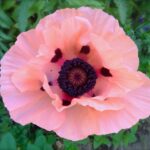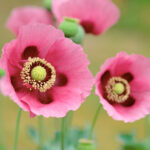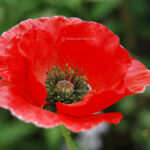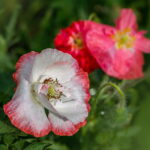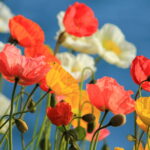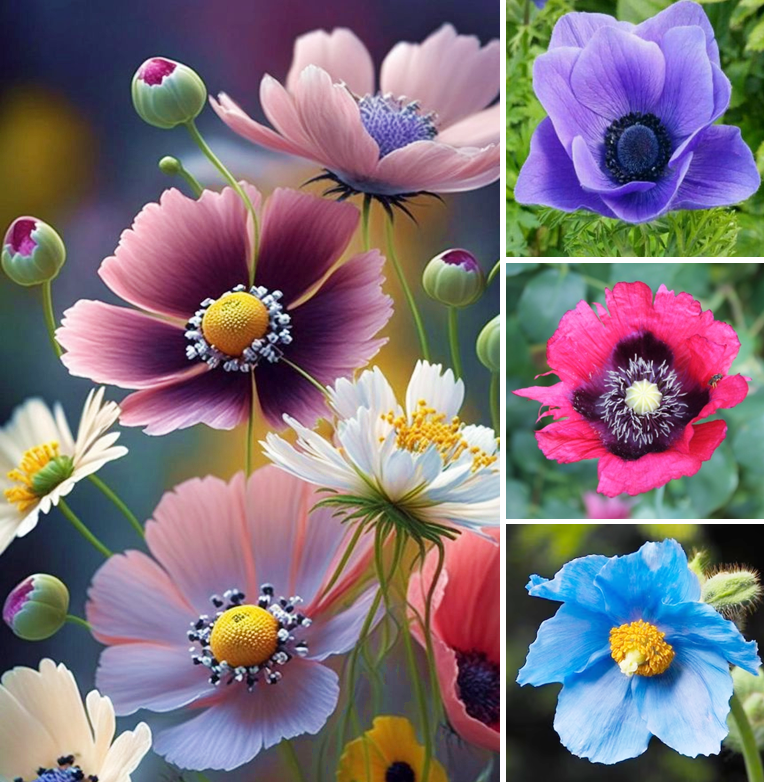
Poppy plants are best grown in full sun. Choose a location that will receive at least 6 hours of full sun each day.Poppy plants commonly self-seed in the garden. Self-seeding plants drop seeds onto the soil at the end of the season that may germinate and grow without help the following season. Choose a position where new plants will be welcome. If you do not want poppies to become established in your garden, deadhead plants before they can drop seed or grow them in containers.Poppy plants need a well drained soil enriched with plenty of organic matter. Prepare soil by weeding it thoroughly, digging it over to loosen it and adding aged animal manure or compost. Keep the area free of weeds until planting. Learn more about preparing soil for planting here.Poppy plants can be grown in containers. If possible choose a variety that’s recommended for container growing. Use a good quality potting mix and make sure your container is large enough for mature plants; a minimum of 20 litres is recommended for poppies. During the growing season, keep in mind that container grown plants may need additional fertiliser to encourage healthy growth.How to Sow Poppy SeedsPoppy seeds do not require any treatment (eg soaking, stratification) before sowing.Poppy seeds grow best when they are sown directly into the garden.
Sow seeds directly in the garden 3mm deep and 30cm apart.
Keep soil moist but never wet or dry.
Seeds should germinate in around 14-21 days at a soil temperature of 16-24°C.
Young seedlings will need protection from pests, pets and weather until they are established.
Tip: Poppy seeds can also be sown in the less formal ‘scatter seed’ method. Simply roughen the soil, scatter seeds evenly over the surface, then smooth the soil over lightly to cover the seeds.Tip: Poppy seeds are quite small. Handle them carefully to avoid them blowing away or being washed away. Mix seeds with sand or fine potting mix prior to sowing or use a seed dispenser, damp toothpick or tweezers to help space them evenly. Press lightly into the surface after sowing so that the seeds make good contact with the soil. Take extra care to make sure seeds and seedlings don’t dry out. Read more about sowing small seeds here.How to Grow PoppiesPoppy plants may need watering during the growing season. Water when the soil is dry about 5cm below the surface (test this by scratching away a little soil with your finger). Water deeply in the early morning or late afternoon. Avoid watering the leaves of plants to avoid fungal diseases. Learn more about watering here.If soil was well prepared no extra fertiliser should be necessary. In poor soil or to give your plants an extra boost, application of a high-potassium fertiliser or one formulated for flowering plants can be beneficial:
Apply slow release fertiliser at the recommended rate when transplanting or when seedlings are 5-10cm tall.
Apply liquid fertiliser at the recommended rate and frequency while plants are fruiting or flowering.
Optional: To give plants room to grow, thin seedlings when they are large enough to handle. Pull out any weak or small seedlings so plants are spaced about 30cm apart.Optional: Pinch out the growing tips of poppy plants to encourage denser growth with stronger stems and more flowers. Using sharp secateurs or snips remove the top set of leaves, cutting just above a set of lower leaves.Poppy plants should flower in approximately 140 days.Deadhead poppy flowers regularly during the growing season. Using sharp secateurs or snips cut fading or dead flowers off just above a set of leaves. Removing old flowers regularly will encourage plants to produce more flowers. Learn more about deadheading flowering plants here.If growing poppies for cut flowers, use sharp snips or secateurs to cut the longest stems possible, removing the lower leaves and placing the stems immediately in a clean bucket of water. Learn more about cutting and conditioning homegrown flowers here.


